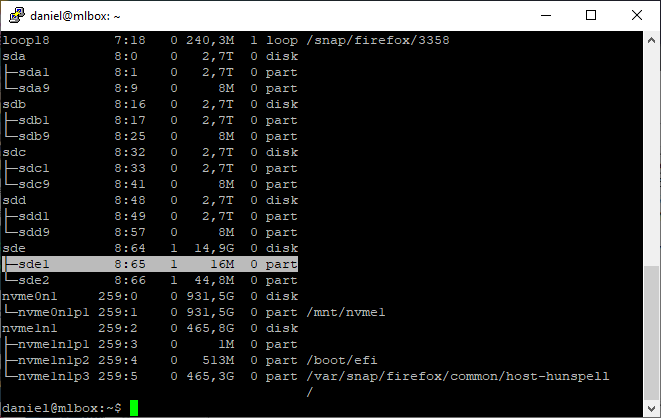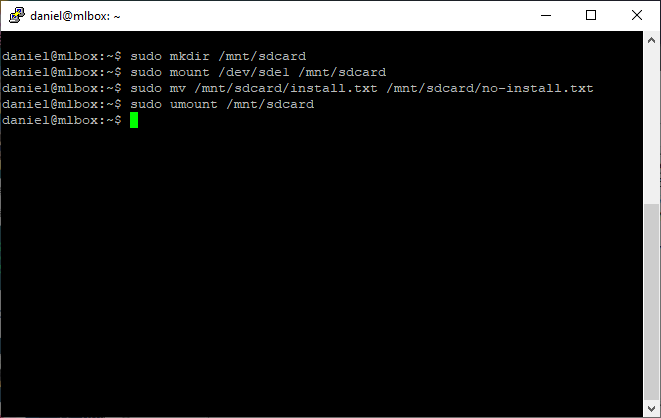Run from SD
You can run the BMC from an SD card without flashing it.
In order to run the BMC from the SD card prepare the SD card for the firmware upgrade process, but do not put it into the Turing Pi 2 yet. Once the card is created, it'll contain 2 partitions. You need to access one of them.
There is no official OTA support for this method of running the BMC firmware, but you can find below a temporary way.
On Windows
On Windows, right after flashing the card, a new partition will appear:

Rename the install.txt file to something else, for example, no-install.txt.
On Linux/MacOS
First, find out the device name of your SC card - for example run lsblk then insert the card and run it again to see which drive appeared. In this example the device is sde and the first partition is sde1:

Remember this partition name.
Create a mount point:
sudo mkdir /mnt/sdcardThen mount the first card partition:
sudo mount /dev/card_partition /mnt/sdcardwhere card_parition is the partition device found earlier, for example:
sudo mount /dev/sde1 /mnt/sdcardNow rename the file:
sudo mv /mnt/sdcard/install.txt /mnt/sdcard/no-install.txtAnd unmount the partition:
sudo umount /mnt/sdcard
Boot the board
Remove the card from the computer, insert it into Turing Pi 2 board, and power it on. The board will boot from the SD card.
At any point, you can rename the file back and the firmware will flash onto the BMC with all the changes made to the SD card image (like configuration)
OTA update
While OTA updates are not supported while running from SD card, you may use SSH and the .tpu file to update the firmware. Refer OTA upgrade to download the upgrade file.
To perform the upgrade you are going to use ssh command. Use PowerShell on Windows and any console emulator on Linux and MacOS (refer to BMC UI to find out the hostname or IP and for the default password).
To upgrade the firmware run:
ssh root@turingpi dd of=/dev/mmcblk0p2 < /path/to/tp2-ota-v2.x.x.tpuAnd reboot immediately.
Note that the BMC might crash during this process because the filesystem is still mounted when you perform low-level disk operations.
Updated about 2 months ago
